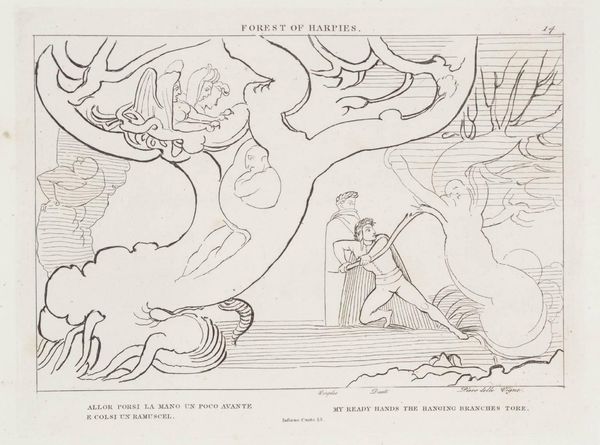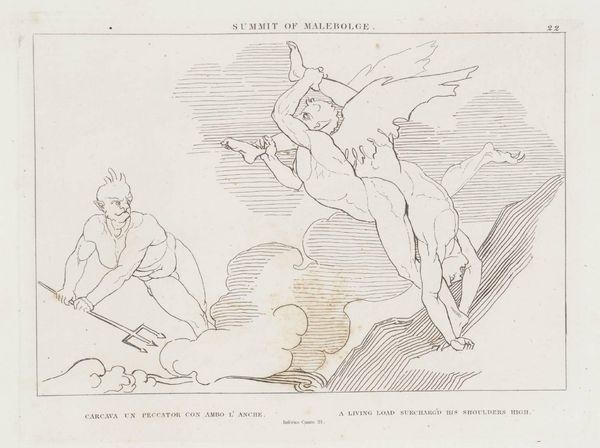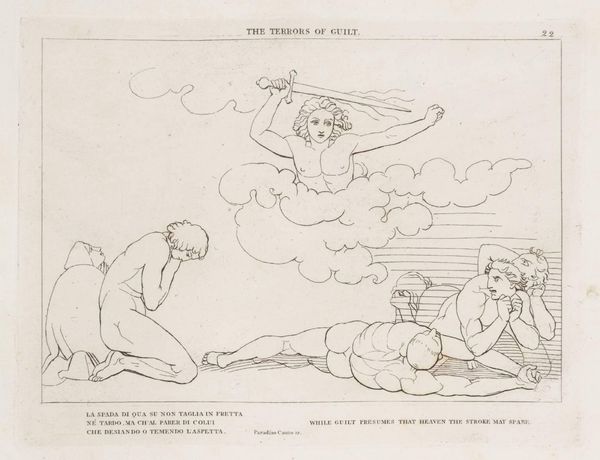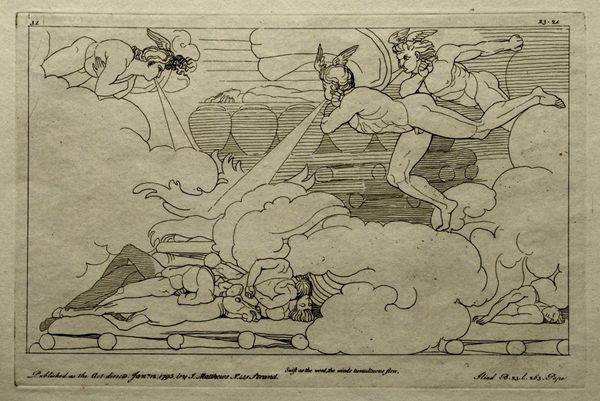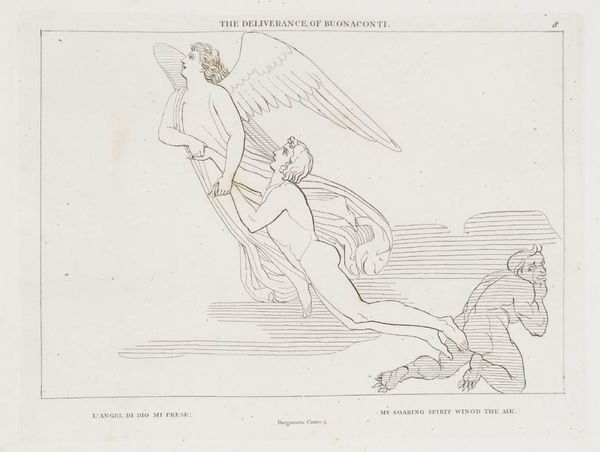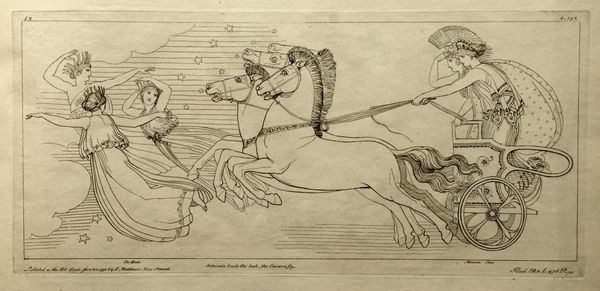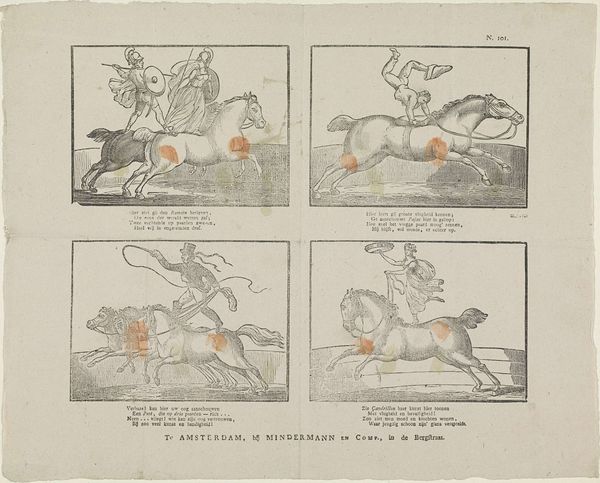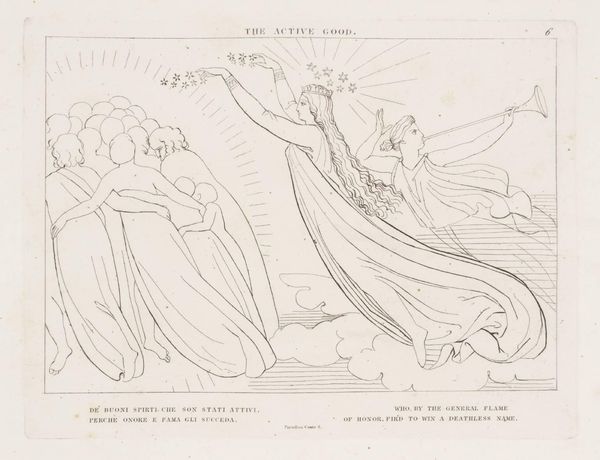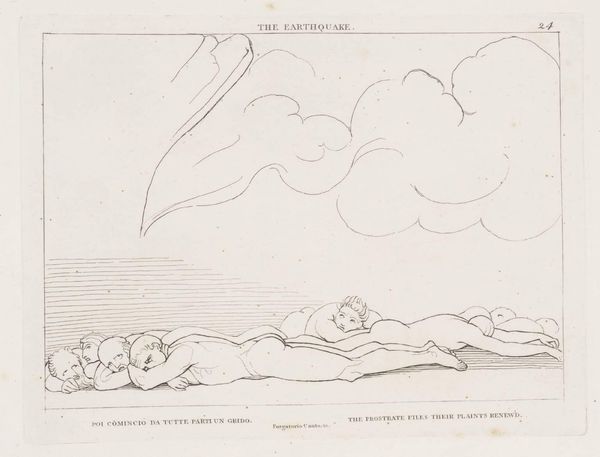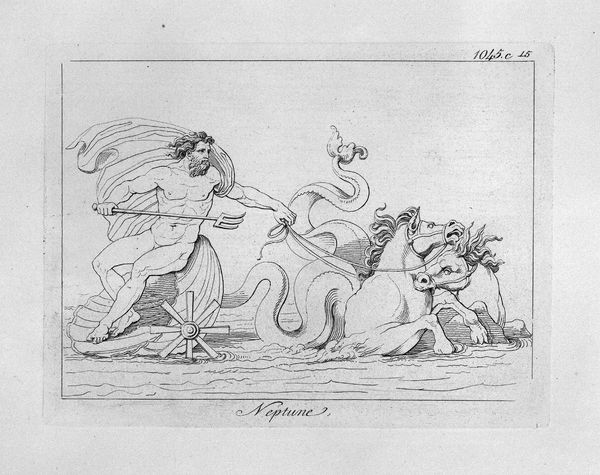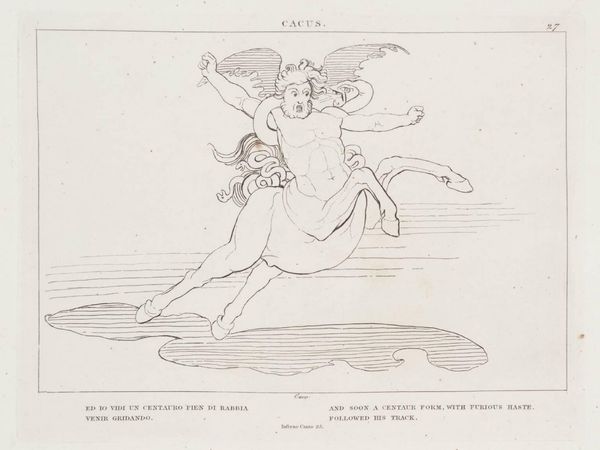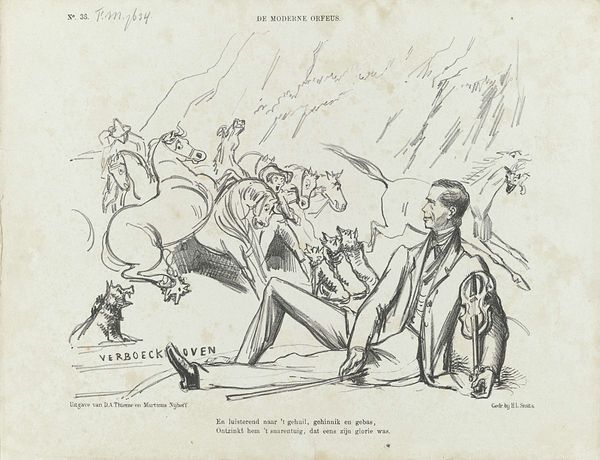
Dimensions: image: 131 x 192 mm
Copyright: CC-BY-NC-ND 4.0 DEED, Photo: Tate
Curator: This is "The Fiery Serpents" by John Flaxman. Though undated, Flaxman was active in the late 18th and early 19th centuries. Editor: The stark lines against the white background create an immediate sense of dread, almost clinical in its depiction of suffering. Curator: Flaxman was deeply engaged with classical literature. Note how the serpent, a common symbol of chaos, is here used to represent divine punishment, likely drawing from biblical narratives. How does this reinforce existing power dynamics? Editor: Absolutely. The serpent’s form itself—its coils, its eyes—evokes primal fears, representing not only punishment, but also temptation and loss of innocence. A potent symbol across cultures. Curator: By referencing ancient imagery, Flaxman speaks to the timeless nature of oppression and resistance. The figures, though biblical, resonate with contemporary struggles against authority. Editor: It is a powerful reminder of how visual symbols transcend time, carrying layers of meaning that reflect our collective anxieties and hopes. Curator: It invites us to consider the serpent's evolving cultural significance. Editor: Indeed, from ancient myth to contemporary discourse, it continues to slither through our imaginations.
